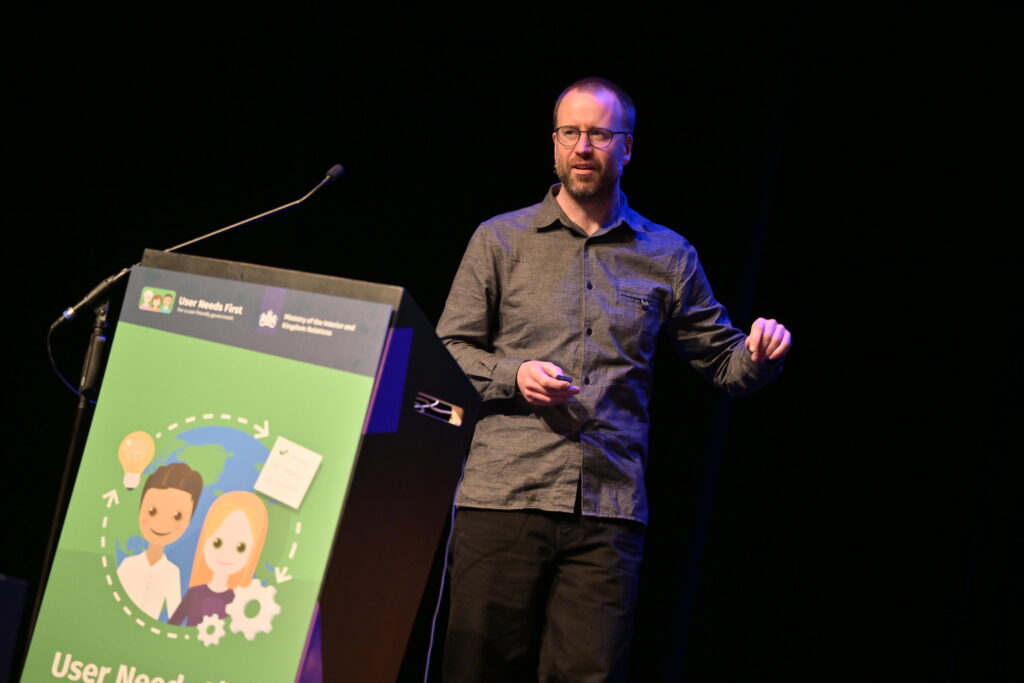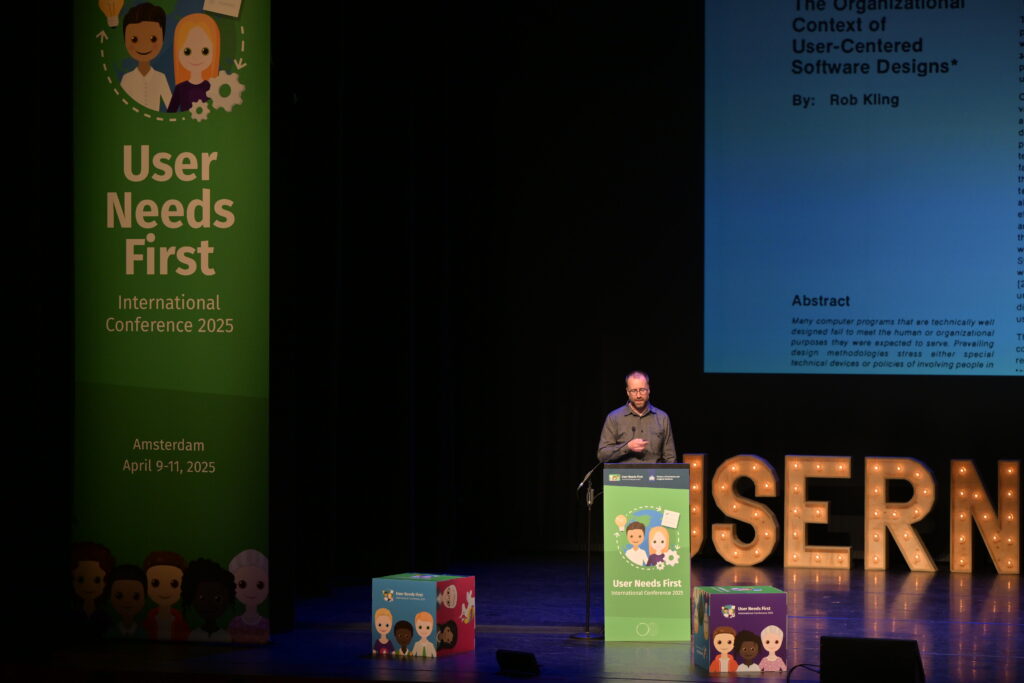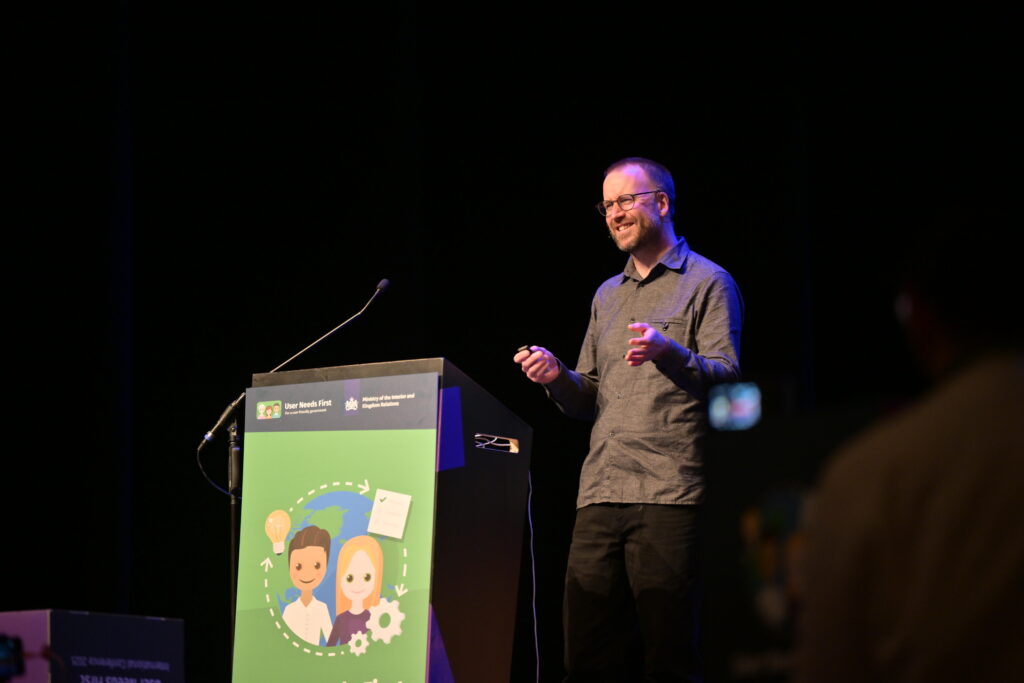Beyond seamlessness: Richard Pope on rethinking user needs in public services
At the User Needs First International Conference, digital government pioneer Richard Pope challenged the crowd to reimagine the foundations of user-centered design in public services. Drawing on his experience as part of the founding team of the UK’s Government Digital Service (GDS) and as the first product manager of GOV.UK, Richard offered a thought-provoking keynote on the limitations of ‘user needs’ as we know them, and how we might evolve public service design to meet the demands of the next generation.
With a background that includes designing Universal Credit and authoring works on Government as a Platform, Richard brought both practical and theoretical insight to the stage. His message was clear: User needs matter, but they are not enough.

People don’t just care about outcomes, they care about how a service makes them feel.
The limits of user needs
User-centered design has deep roots, Richard reminded us, stretching back to the coal mines of 1970s Britain, where sociologist Enid Mumford first argued for systems designed around the needs of real people. The approach gained traction in the digital age and eventually helped transform public services like GOV.UK into simpler, faster, and more efficient platforms.
But Richard urged caution: “Designing for tasks is great, until you hit a service that doesn’t work like a task.”
Take Universal Credit. This isn’t just a transactional benefit, it’s a deeply relational system, serving not just individuals but families, requiring complex decision-making and emotional support. A linear “discovery-alpha-beta-live” approach fell short. Instead, it demanded small-scale, real-world testing and constant iteration.
Richard made a striking point: “People don’t just care about outcomes, they care about how a service makes them feel.”
User-centered design often assumes a single user with a clear goal, but public services rarely work that way. Sometimes, citizens are required to engage with services not out of desire, but obligation. That introduces tensions that pure user-centered thinking can’t always reconcile.
Why seamless isn’t always sensible
We often idolize the seamless digital experience – think Apple or Amazon. But Richard warned this model is misplaced in the public sector.
“The idea that ‘it just works’ is seductive,” he said. “But public services aren’t like ordering a pizza: they’re shaped by laws, duties, and democratic values. People need to understand how they work.”
Drawing on the work of Nobel laureate Elinor Ostrom, Richard emphasized co-production: the idea that public services function best when citizens participate in their design and delivery. Seamlessness, in contrast, can create a ‘digital fog’, obscuring how decisions are made and who is accountable.
“Democracy,” Richard reminded us, “is government by explanation.”
He urged designers to resist the urge to abstract away complexity. Instead, public services should expose it – clearly and responsibly. For example, users should always be able to see who runs a service, under what law, and how to challenge a decision.

What now: expanding the design toolkit
Richard argued that we must go beyond efficiency. Public design should serve not only the user but also the public interest, including civil servants, communities, and democratic institutions.
This means embracing complexity – not hiding it – and addressing administrative burden: the learning, compliance, and psychological costs imposed on citizens. These burdens can be measured and reduced through thoughtful design. “A to-do list or journal might sound simple,” Richard said, “but they can make invisible obligations visible and manageable.”
He also floated ideas for new public expectations, like the right to only provide your data once, or to receive real-time support when life changes.
Ultimately, Richard called for a reimagining of public service design as a democratic practice, not just a technical one. That means:
- Services that explain themselves
- Interfaces that highlight accountability
- Feedback mechanisms that invite real participation
- Seamful – not seamless – design that reflects how government really works
Public services are democratic infrastructure. We need to build them like we mean it.

The big idea
Richard Pope’s keynote wasn’t a call to abandon user needs, it was a call to deepen them. By designing public services that are transparent, accountable, and co-produced with citizens, we can create systems that don’t just work, but that belong to the public in every sense.
As Richard put it: “Public services are democratic infrastructure. We need to build them like we mean it.”
